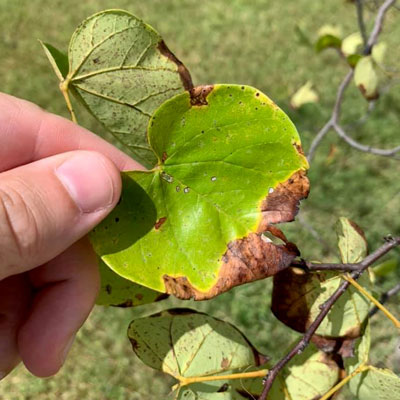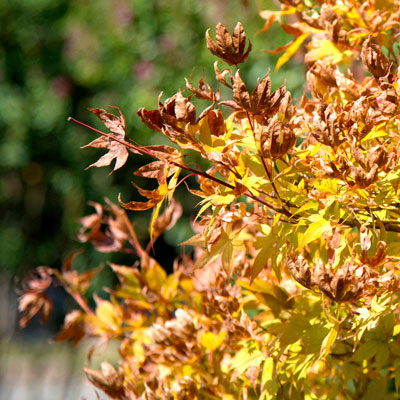Question of the Week: August 19, 2021

“Why are my plant’s leaves turning brown at their tips and edges?”
My answer to this question always is, “Moisture stress.”
To which the person says, “Wow! You really know your stuff.”
And then I go on to explain that I really haven’t given them any kind of an answer. The truth is, many different and often unrelated causes can lead to these symptoms. I’ll explain.
The tips and edges of the leaves are the points farthest from the roots. That means that they are the places that will dry out first and get water last. In human terms, they equate to our earlobes, fingertips and toes. As we feel the impact of poor circulation in those extremities, plants feel the impact of drought at the tips and edges of leaves most dramatically.
So now, here are some of the primary causes of water not being transported adequately out to the far reaches of the leaf tissues.
• Freeze damage still appearing from the February 2021 extreme cold. Conducting tissues within the stems have been damaged.
• Root loss due to transplanting.
• Trunk damage due to trimmers.
• Decay from a branch that wasn’t pruned properly.
• Rodent feeding, especially rats and mice.
• Hot, drying winds. This can include highway winds as you were transporting new plants home from the nursery.
• Accumulations of excess mineral salts from high-sodium water or fertilizers.

• Too much sunlight for a shade-loving species.
• Oh, and dry soil. Letting plants go too long between waterings. I saved the most obvious one for last.
All of which is to say…
Generally, when someone shows me leaves that have browned edges or tips, I have to tell them that the real source of their troubles isn’t in the leaves. It’s somewhere farther down – in the branches, the trunk or the roots, and that they need to do some more searching.
Important note: Just for the record, that’s the same thing that happens with blossom end rot of tomatoes when their plants outgrow the conducting tissues’ ability to get water out to the ends of the fruit. Those tissues dry and turn brown leaving a sunken, inedible bottom side to the fruit.
